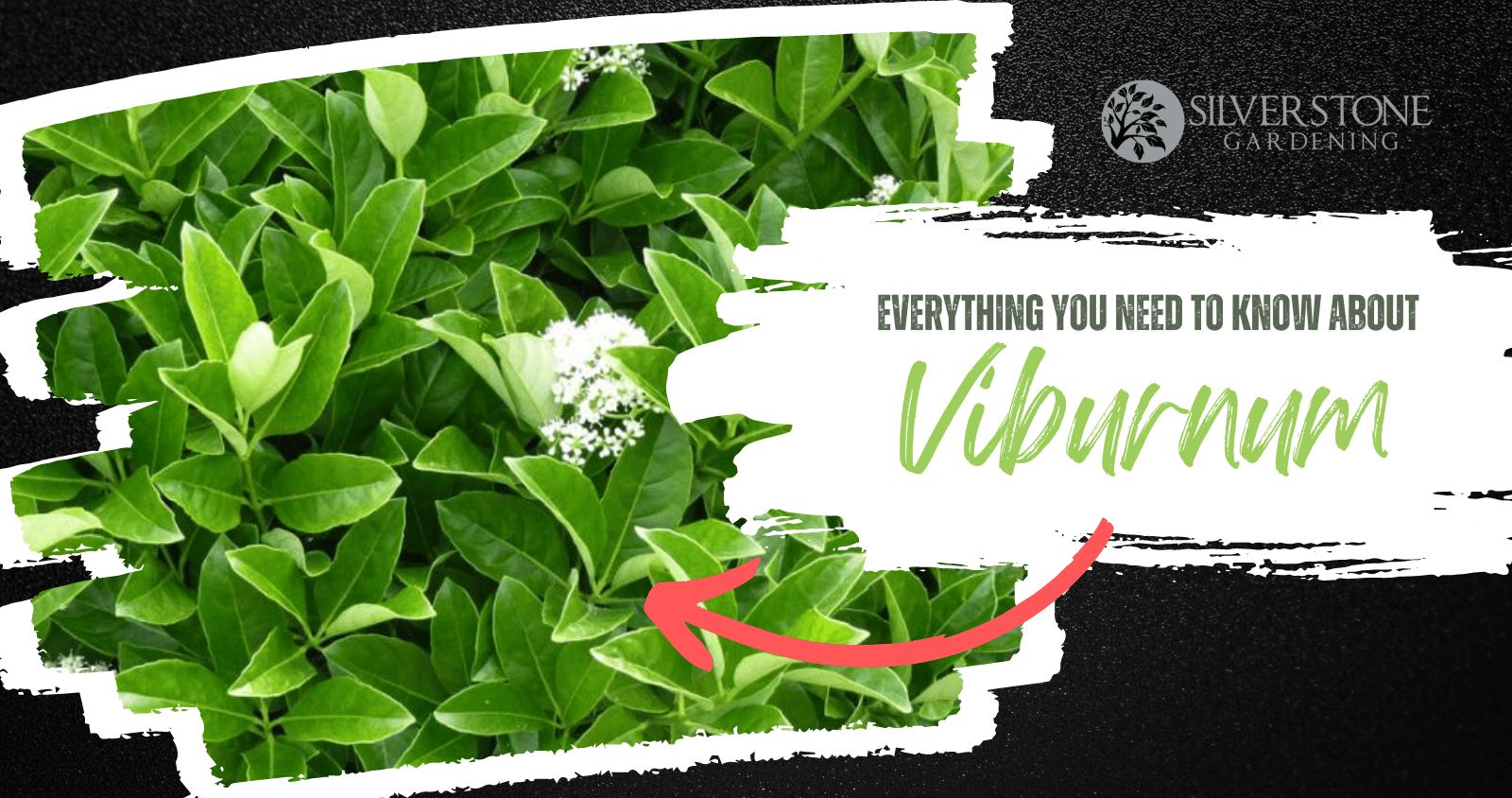
Viburnum is one of the most popular species of hedges in Western Australia. The beautiful white flowers are very noticeable during late winter into early spring. There are a variety of shapes and sizes which makes it a versatile plant, suitable for many different gardens. In addition, Viburnums are also drought-tolerant and have very few pests. You can start to understand why they are such popular plants.
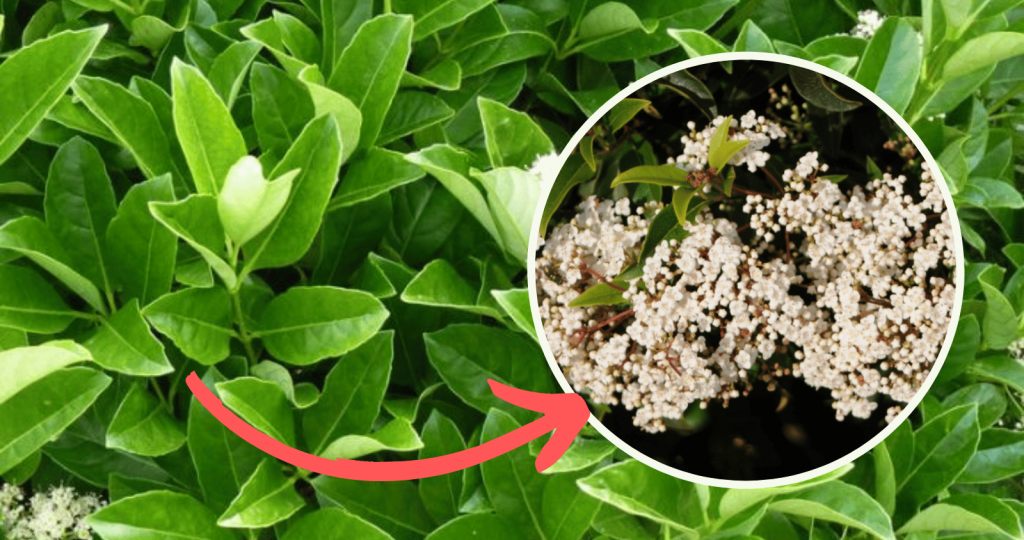
Are Viburnums native to Australia?
No. Viburnum is a genus of shrubs and small trees that is a part of the Adoxaceae family. These plants are native to the Northern Hemisphere and are known for their beautiful flowers and bright berries. Some of the most popular species are Viburnum tinus and Viburnum odoratissimum (Sweet Viburnum).
Which Viburnums produce the best flowers?

One of the most distinctive features of Viburnum plants is their clusters of small white or pink flowers. These flowers are typically arranged in a round shape and are quite fragrant. In the spring, the flowers are followed by bright berries which can be red, blue, or black in colour. These berries can be used in jams, jellies, and other preserves.
Some species and cultivars are known for their profuse and showy flower displays. Some of the most popular species and cultivars known for their abundant flowers include:
- Viburnum tinus Anvi: This cultivar is popular in Western Australia. It produces large clusters of snow white flowers that cover the plant from winter to late spring.
- Viburnum plicatum f. tomentosum ‘Mariesii’: This cultivar of the Japanese snowball bush has large round clusters of white flowers that cover the entire shrub in late spring.
- Viburnum carlesii: Also known as the Koreanspice viburnum, this species produces clusters of pink buds that open to fragrant, pinkish-white flowers in late spring.
- Viburnum x bodnantense: This hybrid Viburnum is a cross between Viburnum farreri and Viburnum grandiflorum. It is known for its large clusters of pink and white flowers that bloom in late winter and early spring.
- Viburnum x burkwoodii: This hybrid Viburnum is a cross between Viburnum carlesii and Viburnum utile. It produces clusters of pink buds that open to fragrant, pinkish-white flowers in late spring and early summer.
- Viburnum x juddii : This hybrid Viburnum is a cross between Viburnum bitchiuense and Viburnum carlesii. It is known for its profuse clusters of pink buds that open to fragrant, pinkish-white flowers in late spring.
It’s important to note that not all the cultivars of these species have the same characteristics; it’s best to check the specific cultivar before buying. Also, the abundance of flowers may depend on the environmental conditions and the care provided.
What conditions do Viburnums like?
Viburnum is a versatile plant that can be grown in a variety of different settings. They are hardy and can tolerate a wide range of soil conditions, as well as varying levels of sunlight. They can be grown as shrubs or small trees, depending on the specific species and cultivar. Some species can grow up to 4 meters tall, while others are much more suited to a 1-meter-high hedge.
Overall, Viburnum is a beautiful and versatile plant that can be grown in a variety of different settings. Whether you are looking for a beautiful ornamental plant or a practical addition to your garden, this plant is a great choice.
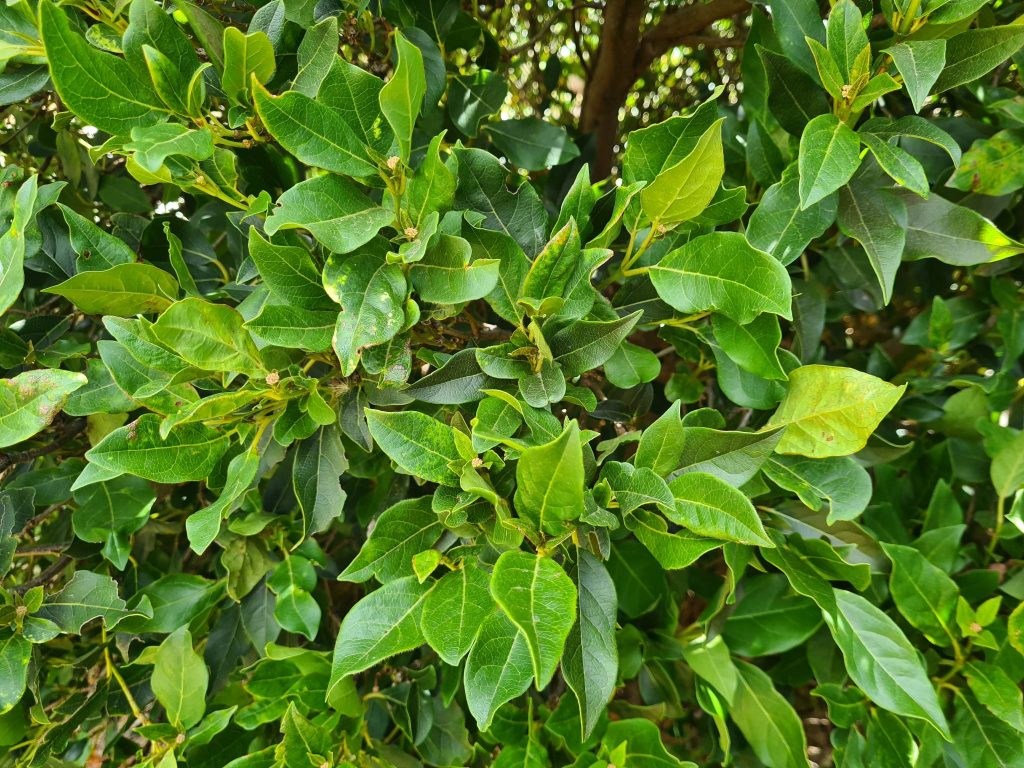
How quickly does a viburnum hedge grow?
The growth rate of a Viburnum hedge can vary depending on the specific species and cultivar. Some species and cultivars have a fast growth rate and can grow up to 2 meters per year, while others have a slower growth rate and may only grow 30-50cm per year.
Sweet Viburnum, also known as “Dense Fence”, can grow 1.5-2 meters in 12-14 months in the right conditions and will reach four meters high. This makes it a perfect plant for those who want a quick screening hedge.
Viburnum tinus, also known as laurustinus, is a slow to moderate growing evergreen shrub. On average, it will grow between 30-60cm per year and will max out around three meters high.
It’s important to note that the growth rate may also vary depending on the environmental conditions, such as the amount of sunlight, soil moisture, quality, and the amount of water and fertiliser provided. Here is a great organic fertiliser that can be used on just about every plant.
Overall, if you want to grow a Viburnum hedge, it is important to select the species that is appropriate for your climate and growing conditions, and also to provide the hedge with proper care and maintenance.
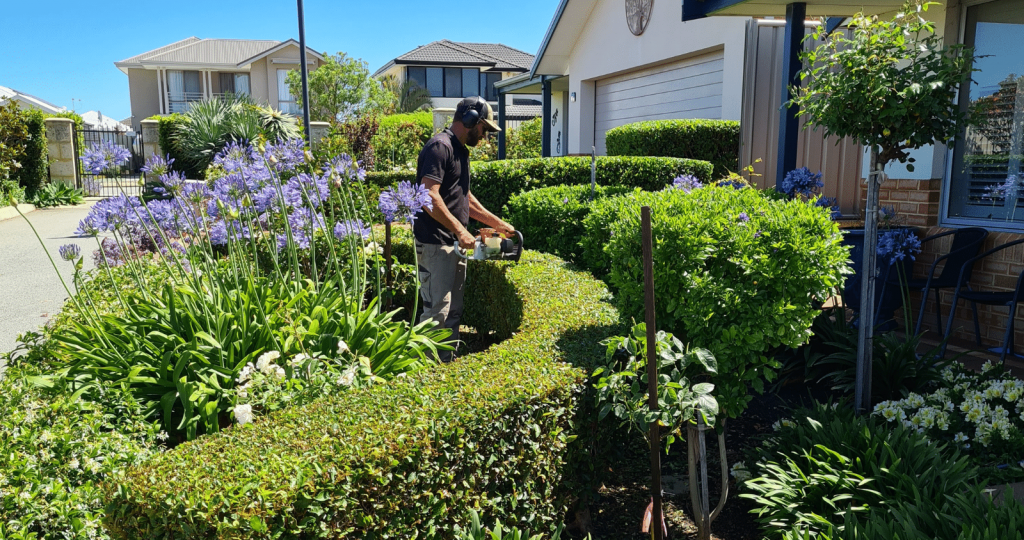
How often should I prune my Viburnum?
Hedging frequency depends on the type of Viburnum you have and your goals for your garden.
If you want a tight, formal-style hedge, then you will need to pick a variety with smaller leaves like Viburnum Tinus. Hedging every 4-8 weeks will keep a dense, tight, formal hedge.
Informal hedges that are there to provide a natural barrier rather than a showpiece can be hedged every 3-4 months. It is important to let your plant grow to your desired height before pruning back. Both larger and smaller leaved varieties are suitable as informal hedges.
Do Viburnum need lots of water?
Viburnum plants have moderate water needs; they do not require excessive amounts of water, but they do need to be kept consistently moist. It is important to note that different species can have different water requirements. For example, Viburnum tinus and Viburnum odoratissimum are drought-tolerant once established and can go longer periods without water. On the other hand, Viburnum opulus and Viburnum carlesii are less tolerant to dry conditions and may need more frequent watering. (This product is great for helping with heat stress; best applied before the stress but can also help after or during a heat wave.)
Viburnum prefers well-drained soil. Whilst they are not as thirsty as many other hedges, they do not tolerate drought conditions as well as some native Australian plants. However, a reticulated garden should be able to sustain your plant through a Perth summer as long as the water is getting down to the roots. Mulching and high-quality wetting agents are very helpful in assisting Viburnums to thrive through a hot summer.
When first planting, it is important to provide it with a regular watering schedule until it is established. Once the plant is established, the watering schedule can be reduced, but it will still need to be watered during dry periods or when the soil becomes dry. It is always better to check the soil moisture instead of relying on a specific watering schedule.
Also, it’s important to keep in mind that the location, weather, and temperature of the area where you want to grow your Viburnum will affect the water requirement. In general, Viburnums are more tolerant to drier conditions than to wet soil, as it can cause root rot.
In summary, Viburnums do not require large amounts of water, but they do need consistent moisture and regular watering during dry periods to thrive. It’s important to monitor the soil moisture and adjust the watering schedule accordingly.
Do viburnum struggle with pests and diseases?
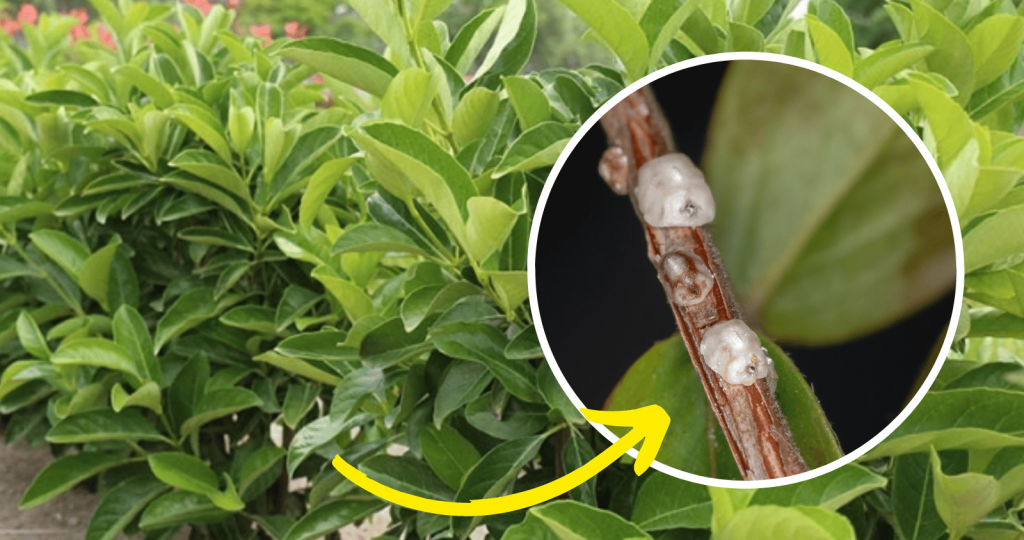
Viburnums are generally considered to be relatively disease-resistant and pest-free plants. However, like most plants, they can be affected by pests and diseases under certain conditions.
Some common pests that can affect Viburnum include scale insects, spider mites, and aphids. These pests can cause damage to the leaves and stems of the plant and can also introduce disease. Scale insects and spider mites can be controlled with insecticidal soap or horticultural oil, while aphids can be controlled with a strong spray of water or insecticidal soap. (Here is where you can find some horticultural oil; make sure to double-check that it suits your goals.)
Viburnums can also be affected by a variety of fungal diseases such as powdery mildew, leaf spot, and stem cankers. (Here is an organic fungicide that will help with Powdery Mildew and Black Spot.) These diseases are usually caused by high humidity and poor air circulation. To prevent these diseases, it is important to provide the plant with proper care and maintenance, including adequate sunlight, proper spacing, and good air circulation.
It’s also important to note that some species are more resistant to pests and diseases than others. For example, Viburnum odoratissimum is known for its disease and pest resistance. You can find more thorough information about diseases and pests in Viburnums here.
In general, Viburnums are relatively low-maintenance plants, but it is important to keep an eye out for pests and diseases and take action as soon as you notice any signs of trouble. Proper care and maintenance can help to prevent many issues and keep your plants healthy and beautiful.
Do Viburnum have medicinal benefits?
In addition to being beautiful ornamental plants, Viburnum also has a number of practical uses. In the same way that the cranberry bush is used for its medicinal properties, the leaves of some species can also be used as a natural insect repellent.
Viburnums have been used for medicinal purposes for centuries by traditional cultures worldwide. Some species are known to have anti-inflammatory, anti-bacterial, and anti-viral properties.
The most common medicinal use of Viburnum is for the treatment of respiratory conditions such as colds, flu, and bronchitis. The leaves and bark of some species can be made into teas or decoctions that can help relieve congestion and soothe sore throats.
Viburnum opulus, also known as the European Cranberry bush, is used in traditional medicine to treat various ailments such as diarrhea, dysentery, and hemorrhoids. The bark and leaves of this plant contain tannins and flavonoids which have astringent and anti-inflammatory properties.
Viburnum tinus, the laurustinus, is also used in traditional medicine for its anti-inflammatory properties. The leaves can be used to make tea that can help soothe a sore throat and relieve congestion. The oil from the leaves and flowers is also used to treat skin conditions such as eczema and psoriasis.
It’s important to note that these traditional uses have not been scientifically proven and more research is needed to evaluate the safety and effectiveness of Viburnum as a medicinal plant. It’s also important to consult a healthcare professional before using any plant as a medicine.
So, there you go: Viburnums are a drought-tolerant, versatile plant that does well in Western Australian conditions and could be the perfect addition to your garden. If you’re interested in upgrading any aspect of your garden (including planting viburnums!), contact Silverstone Gardening today; our professional, knowledgeable team would love to help. Simply head to our contact page here and complete the ‘Request a Quote’ form.
